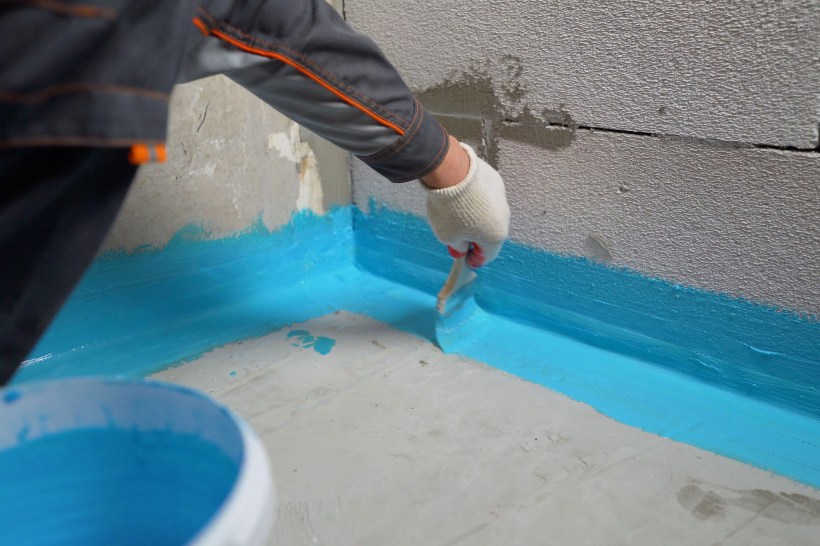An Unbiased View of Waterproofing Auckland
Table of ContentsFascination About Waterproofing AucklandThe 20-Second Trick For Waterproofing AucklandThe Basic Principles Of Waterproofing Auckland The 6-Minute Rule for Waterproofing AucklandWaterproofing Auckland Fundamentals ExplainedThe Waterproofing Auckland Statements
Waterproofing buildings is the approach of developing an obstacle over surface areas of structures, roofings, walls as well as other structural members of buildings to avoid water penetrations via these surfaces. In summary, developing surface areas are made water-resistant as well as waterproof. Research study has revealed that waterproofing only represents 1% of a building's building and construction prices but when ignored, it can be in charge of virtually 90% of the damage.
You require to make sure that you get the ideal types of waterproofing materials for your unique demands. These are easily available from vendors of stonework items like, and they're simple to blend as well as apply.
Polyurethane liquid membrane method of waterproofing is generally used for the level roof covering area and also exposed to weathering. This sort of waterproofing material is extremely conscious wetness content present. Therefore, before application, it is essential to be extra careful in assessing the dampness web content of the concrete slab, or else peeling off or de-bonding of membrane layers may happen after some time.
It supplies a lot more adaptability than the cementitious kinds of waterproofing. At the end of the day, there are many distinct kinds of waterproofing materials in the market.
The Basic Principles Of Waterproofing Auckland
Just how does cellar waterproofing job? Interior cellar waterproofing works by attending to water infiltration where it materializes itself indoors.

Outside cellar waterproofing techniques ease this stress by rerouting water into a gravel-covered footing drain, which lugs it far from your home. While both methods of basement waterproofing work well, they repair the issue in various methods. Interior basement waterproofing continues to be a popular alternative because of its comparatively small cost point, while exterior basement waterproofing works for home owners that prefer to avoid interior building job.
Call us today to discover even more concerning the basement waterproofing work we conduct for Georgia house owners.
An Unbiased View of Waterproofing Auckland
It is vital to water-proof your home. Inside areas of our home have to be maintained completely dry from roofing to basement. Waterproofing your home before construction will prevent these troubles. If you water-proof your residence, it will avoid damage later. downpour seepage. Such problems will certainly call for a professional as well as some standard understanding regarding the problem and solutions to it.
y. It helps in reducing humidity inside your house as well as therefore secures points inside your house from damage triggered as a result of humidity or water direct exposure. It is additionally essential for the accuracy of the building. Relying on the degree of water damage or proprietor preference, waterproofing systems can be installed inside or outdoors.
First, the poly acrylic chemical service is prepared which is used to seal the find this breakage or leakage on the wall and also balcony which will certainly be a solid water resistant base in addition to safeguard as well as protect the toughness of any structure. This is done by an extremely trained specialist group. You need to ensure that premium items are made use of for the procedure.
The final step is to place two layers of poly acrylic chemical with white concrete on the surface area. is ideal for structures and also frameworks that are already having leak or damage in addition to for new structures to avoid leakage in future. This procedure helps in keeping the life and high quality of the building as well as makes sure that there is no damages to the structure because of the rainfalls.
4 Simple Techniques For Waterproofing Auckland

Apply a thick cement slurry over the surface of the slab. Over this layer, apply an ending up coat with cement sand mortar 1:4 as well as water-proofing substance as per the style.
Make a side between the parapet and the sloping slab on Discover More the 2nd day. Heal this waterproofing for fifteen days, with wet gunny bags spread over it.
Not known Facts About Waterproofing Auckland
Also, check the density of the Shahbad tiles. It needs to be between 32mm to 40mm (1 1/4 to 1 1/2). Maintain the break joint pattern while fixing the Shahabad tiles for the base. After taking care of the Shahabad ceramic tiles, grout the joints with cement slurry totally. Seal the joints between the Shahabad floor tiles with the assistance of C.M.
For the cellar, the provision of seamless gutter and also sump is made in P.C.C. itself as well as Shahabad base is also prepared in the same fashion. The rain gutter is given an appropriate incline towards the sump. This provision is a precautionary procedure versus the periodic entrance of rain in the cellar. Over the plastered Shahabad base, raft piece is cast as well as the R.C.C.
Rough Shahbad floor tiles are then fixed to the upright pardi from the outside. Apply cool cement paste on the 4 edges as well as in the center of the 25mm (1) Shahabad tile, Press this floor tile strongly over the R.C.C. pardi in check my site line and level. At one time, solution just an elevation of 1.
Waterproofing Auckland - Questions
After treating, offer the last jointless water resistant plaster coat in C.M. 1:4 over the rough Shahabad. The entire process discussed above kinds a box around the structure as well as does not permit any type of water to permeate with or leak from the cellar.